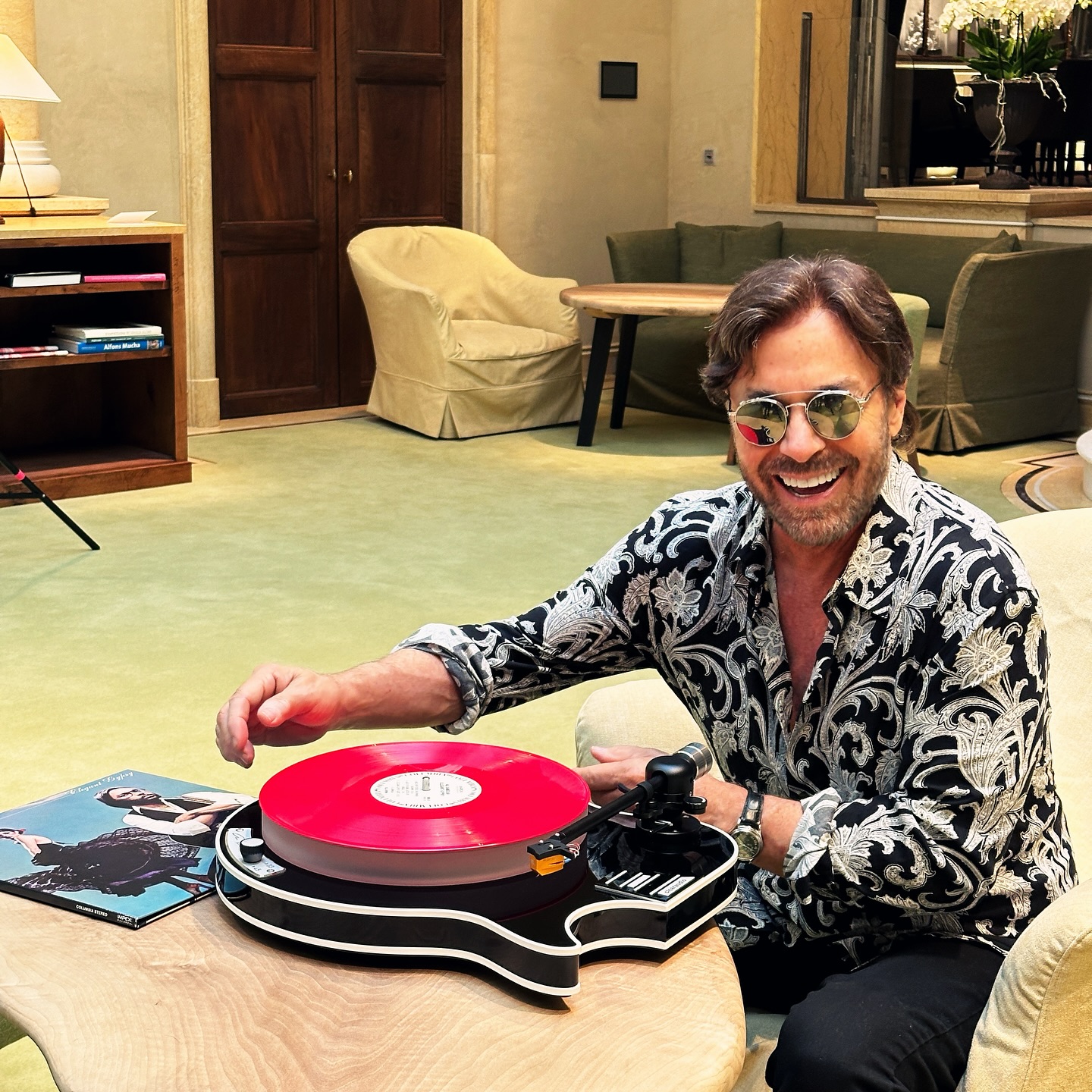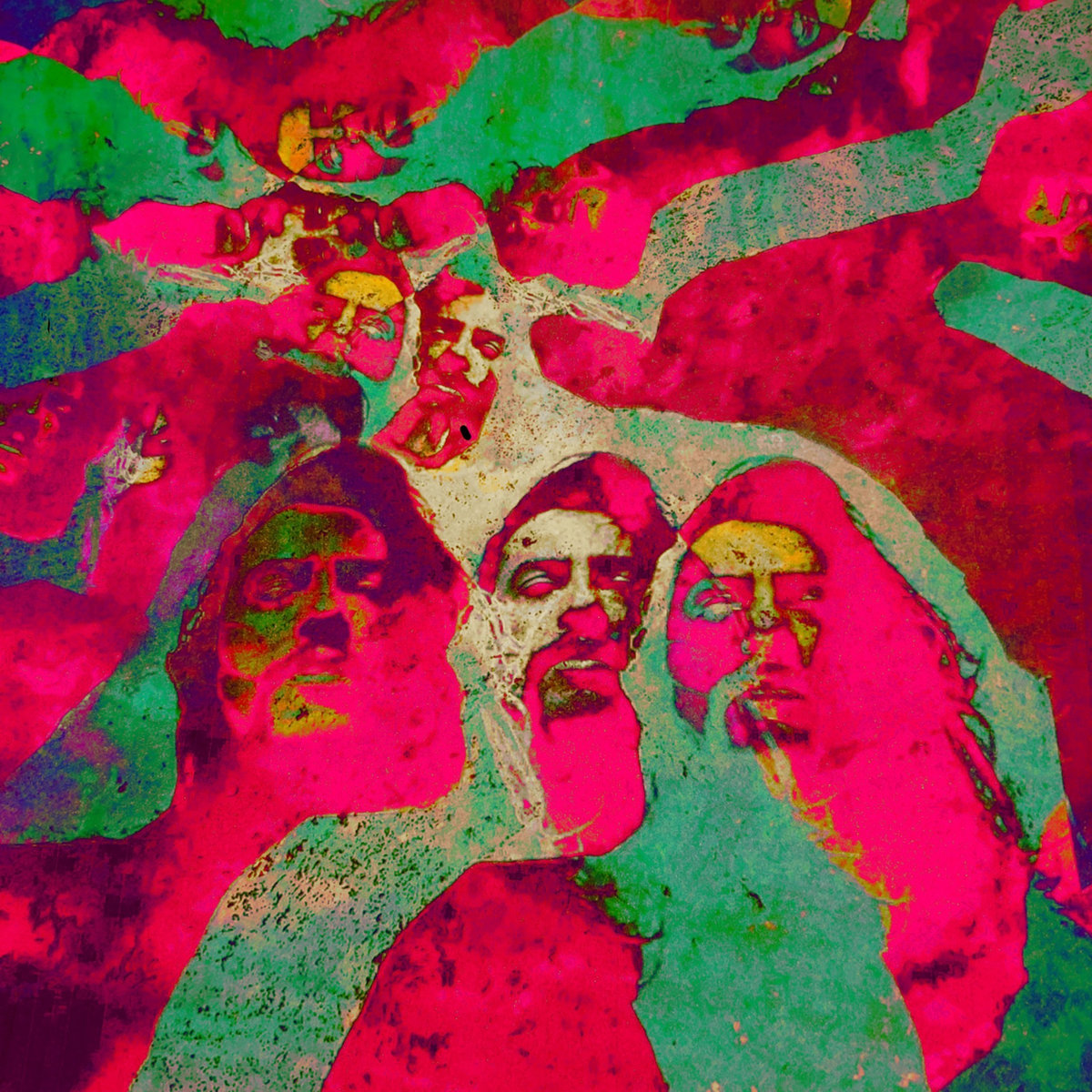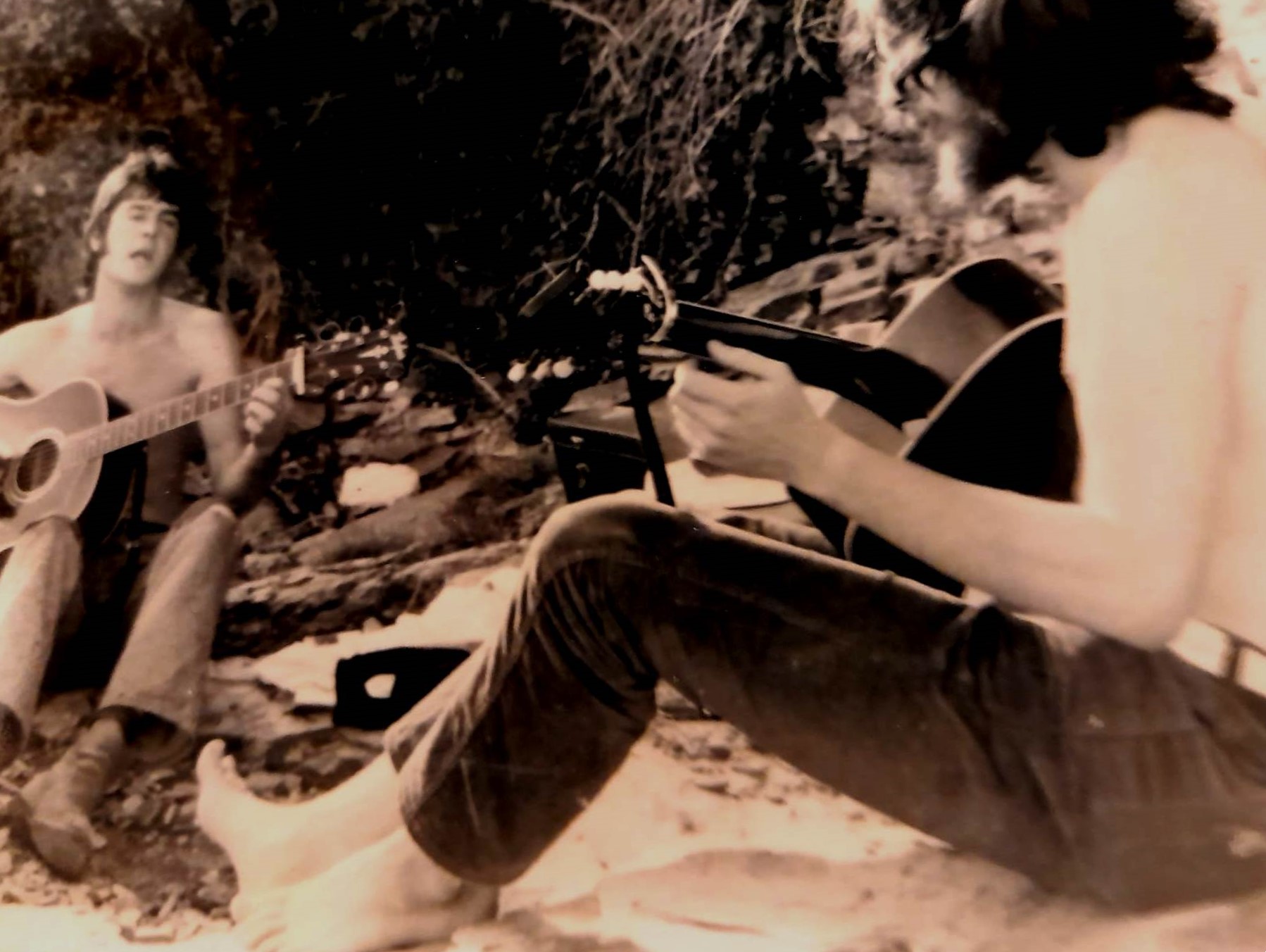Al Di Meola: Celebrating Sound with the Clearaudio Turntable and ‘Twentyfour’
Al Di Meola’s latest album, ‘Twentyfour,’ showcases his artistic evolution and reflects deeply on life during the pandemic. Alongside this musical journey, he has collaborated with Clearaudio and Impex Records to create a unique turntable inspired by his iconic 1971 Gibson Les Paul, merging high-end audio technology with his passion for music.
A celebrated guitarist and composer, Al is known for his virtuosic technique and innovative fusion of jazz, rock, and world music. Throughout his decades-long career, he has collaborated with legendary artists such as Chick Corea, John McLaughlin, and Paco de Lucía, earning accolades for his significant contributions to contemporary music. His ability to blend technical mastery with profound emotional expression has established him as a legendary figure, inspiring countless musicians and fans alike.
‘Twentyfour’ stands as a testament to creativity born from the chaos of the pandemic. Initially envisioned as a simple acoustic project, it blossomed into a grand exploration of sound as Al embraced the limitless possibilities of music. The album weaves together a rich sonic tapestry, capturing a spectrum of emotions that make each track distinct and significant, serving as a contemporary reflection of the past four years. Influenced by the transient nature of music, Al draws inspiration from life itself.
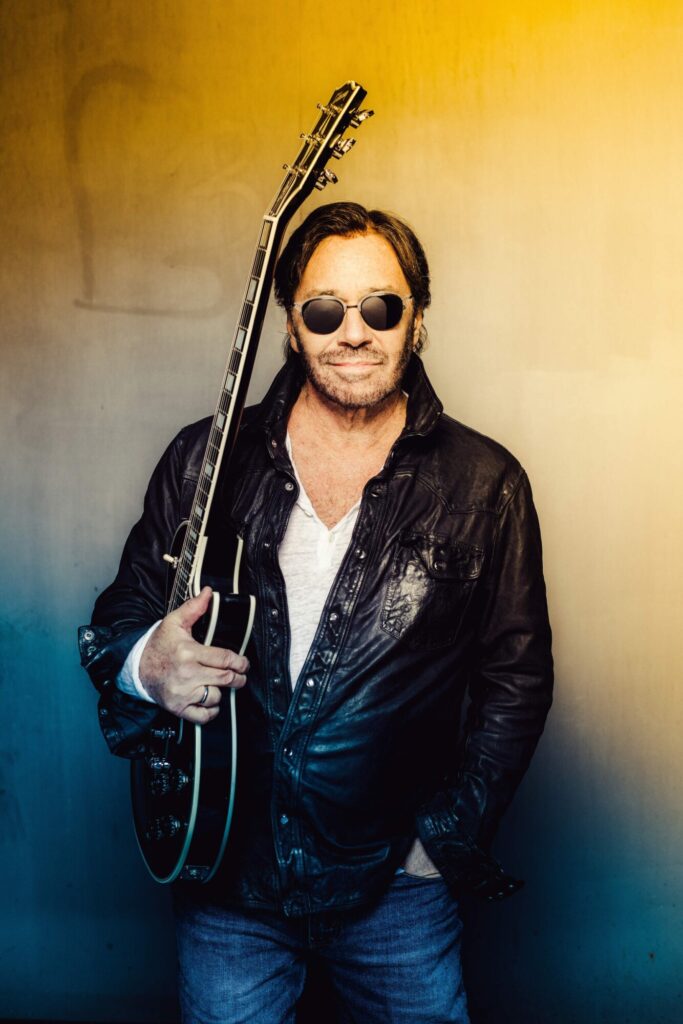
“The collaboration with Clearaudio and Impex Records began through a mutual appreciation for high-fidelity sound reproduction and a shared passion for music”
It’s really wonderful to have you. Can you walk us through how the collaboration with Clearaudio and Impex Records began? What sparked the idea of creating a turntable inspired by your 1971 Gibson Les Paul?
Al Di Meola: The collaboration with Clearaudio and Impex Records began through a mutual appreciation for high-fidelity sound reproduction and a shared passion for music. The idea of creating a turntable inspired by my 1971 Gibson Les Paul emerged from our desire to merge high-end audio technology with iconic musical artistry. This turntable isn’t just an audio device; it represents the fusion of exceptional craftsmanship in both music and audio engineering.
As a musician known for your impeccable sound, how does the sound quality of this turntable compare to other high-end turntables you’ve used? Were there specific sound qualities you wanted to achieve?
Al Di Meola: The sound quality of this turntable is extraordinary. Compared to other high-end turntables I’ve experienced, this design brings out nuanced details in music that might otherwise go unnoticed. I aimed for a sound that is warm, rich, and true to the original recording, emphasizing clear mids and tight lows, which are crucial for delivering an authentic listening experience.
How does it feel to see a turntable that reflects your musical journey and personal style? What emotions do you associate with this creation?
Al Di Meola: Seeing this turntable come to life, reflecting my musical journey and personal style, is immensely gratifying. It embodies decades of my musical evolution and artistic spirit. The creation evokes emotions of pride, nostalgia, and excitement, knowing that listeners can experience music in a way that resonates deeply with my own artistic values.
“The vinyl renaissance underscores a communal yearning for tangible”
How do you think collaborations like this one impact the culture of listening to music? It’s wonderful to see the vinyl renaissance happening over the last few years.
Al Di Meola: Collaborations like this renew and deepen our appreciation of music, emphasizing the importance of quality listening experiences in an era dominated by digital formats. The vinyl renaissance underscores a communal yearning for tangible, immersive music experiences. These projects can inspire both seasoned audiophiles and new listeners to value music as an art form.
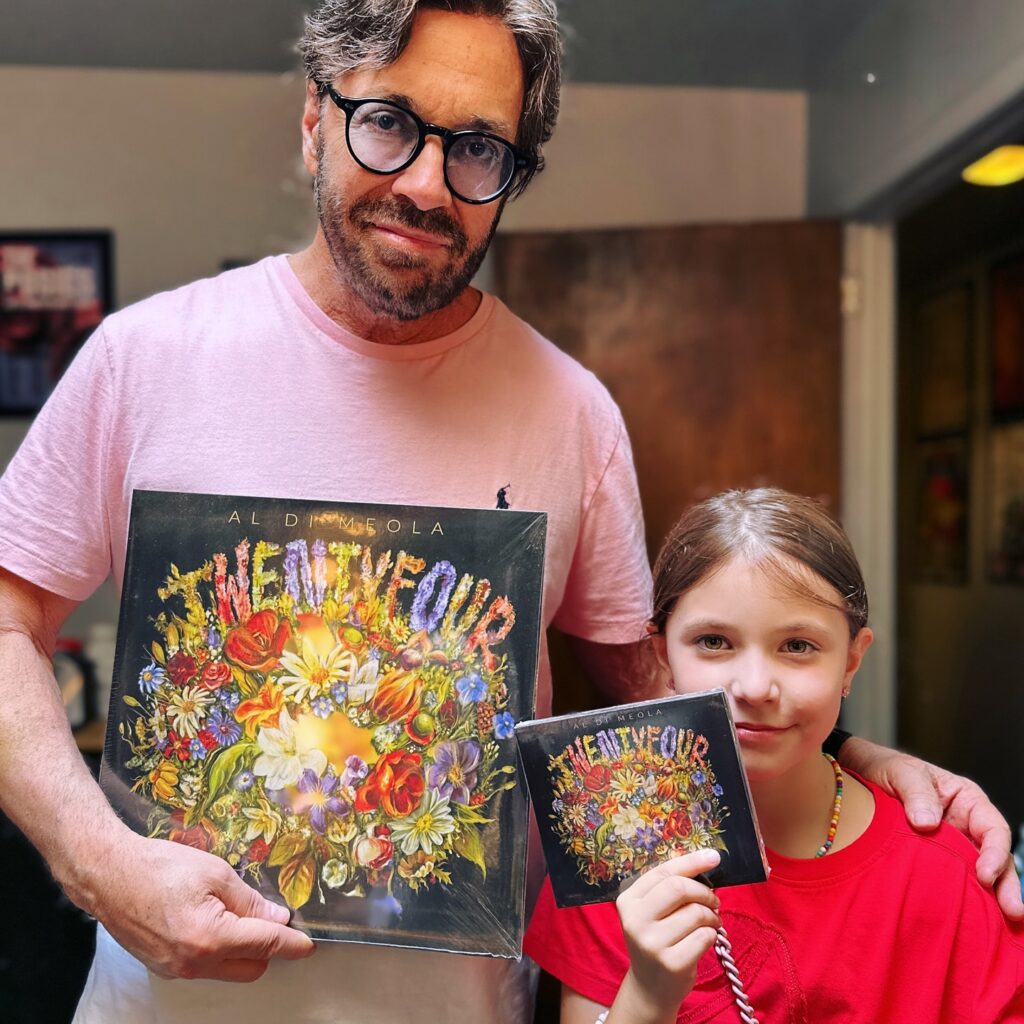
Now let’s move into your exciting future projects, the main one being the release of your latest album. Can you share the creative process behind ‘Twentyfour’?
Al Di Meola: The creative process for ‘Twentyfour’ was a journey of self-reflection and exploration during the time of the unknown brought on by the pandemic. Initially intended as an acoustic project, it organically grew into a multifaceted musical expression due to the additional time and introspection afforded by the pandemic. This album captures a range of emotions, styles, and stories accumulated over the course of four years.
‘Twentyfour’ began as a reflective acoustic project but expanded into a much grander musical exploration. Can you describe some of the specific experiences or realizations during the pandemic that prompted you to broaden the scope of this album?
Al Di Meola: The pandemic, with its global pause, profoundly influenced the expansion of the album’s scope. The enforced solitude allowed for deeper introspection and creative freedom, leading to a broader and richer sonic palette. It pushed me to rethink limitations and explore uncharted musical territories.
Can you share some pivotal moments or inspirations that led to this transformation and how they influenced the final sound of the album?
Al Di Meola: Specific experiences, such as revisiting old compositions, experimenting with new sounds, and philosophical reflections on life’s unpredictability, played pivotal roles in shaping ‘Twentyfour.’ These moments underscored the importance of growth and adaptation, influencing the album’s dynamic range and emotional depth.

‘Fandango,’ the lead single from ‘Twentyfour,’ blends flamenco and jazz fusion in a unique way. What was your creative process for this track, and how did you achieve the balance between these distinct musical styles to showcase both your technical prowess and compositional sensibilities?
Al Di Meola: For ‘Fandango,’ the blend of flamenco and jazz fusion was a meticulous process. It involved layering distinct rhythmic patterns, harmonies, and improvisational elements inherent to both styles. The balance was achieved by deeply understanding the cultural roots of each genre and respectfully merging them through my technical and creative lens.
Considering that ‘Twentyfour’ is described as a journey through your musical evolution, how does this album reflect your personal and artistic growth over the past four years, especially in the context of the global challenges and changes during the pandemic?
Al Di Meola: ‘Twentyfour’ mirrors my personal and artistic evolution, especially during the pandemic’s challenging period. It encapsulates a journey of introspection, resilience, and unrelenting creative drive. The album reflects on life’s impermanence and the transformative power of music, serving as a testament to growth amid adversity.
Can you share any other particular track from ‘Twentyfour’ that holds a significant personal story or emotion for you, and explain how you translated that into music?
Al Di Meola: One track that holds significant personal emotion is ‘Tears of Hope,’ the first piece I wrote during the pandemic. This piece delves into themes of loss and renewal, translating profound feelings into intricate melodies and harmonies. The musical arrangement aimed to conjure and convey these deeply personal experiences.
In creating ‘Twentyfour,’ you incorporated diverse instrumentation and intricately woven melodies. How did your approach to arranging and composing evolve throughout the making of this album? Can you share some further details on how it was recorded?
Al Di Meola: Throughout the making of ‘Twentyfour,’ my approach to arranging and composing evolved to become more inclusive of diverse instruments and styles. The album features complex, interwoven melodies that required innovative recording techniques and collaborative input from various musicians, fostering a rich, layered sound.
What are some of the most important players that influenced your own style, and what in particular did they employ in their playing that you liked? Do you feel that the approach to music-making is different when you become more and more experienced? If so, in what way in your case?
Al Di Meola: Influences such as Paco de Lucía, John McLaughlin, and Chick Corea have immensely shaped my style. Their ability to blend technical mastery with emotive expression sparked my love for complexity and fusion. With experience, my approach to music-making has become more reflective and intentional. I now prioritize depth and emotional authenticity alongside technical proficiency.
Do you have any other active projects going on at this point?
Al Di Meola: Aside from ‘Twentyfour,’ I’m involved in several exciting projects. These include collaborative works with other musicians, exploratory recordings in different genres, and potential live performances, all aimed at expanding musical horizons and connecting with audiences old and new.
Discovering new music can often lead to fresh perspectives and ideas. Can you share some of the latest records you’ve been spinning on your turntable?
Al Di Meola: Lately, I’ve been enjoying a mix of contemporary jazz, world music, and classical records on my turntable, such as Tigran Hamasyan. These explorations continually inspire new ideas and fresh perspectives, enriching my own creative process.
“Music’s transient nature is both a challenge and a beauty”

In my interview with Peter Brötzmann, he highlighted that once music is played, it exists momentarily and cannot be taken back, unlike a painting, which can be modified or even destroyed. How do you perceive this transient aspect of music in your creative process? Does it affect how you approach your performances or recordings?
Al Di Meola: Music’s transient nature is both a challenge and a beauty. It demands presence and immediacy, which profoundly influences my live performances and recordings. Each moment captured in music is unique and irreversible, adding a layer of authenticity and raw emotion to my creative process. This understanding fuels my drive to make each performance meaningful and reflective of the moment.
Klemen Breznikar
Headline photo: Al Di Meola
Al Di Meola Official Website / Facebook / Instagram / Twitter / YouTube

